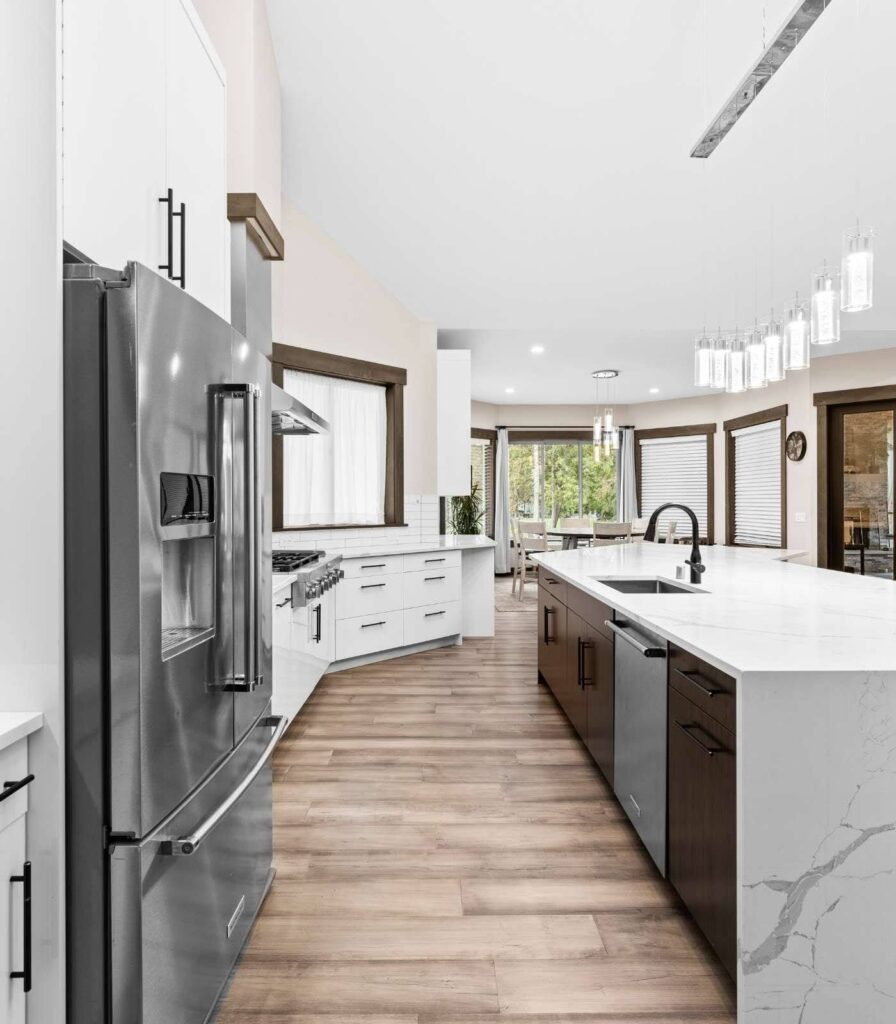Picture this: it’s a chilly Pacific Northwest morning, the coffee’s brewing, and instead of stepping onto an icy tile floor, your feet meet a gentle, even warmth that makes the whole kitchen feel cozier. That daily luxury is why so many homeowners choose to install heated flooring in your kitchen when remodeling. Beyond comfort, radiant floors offer energy savings, design versatility, and even health benefits-making them one of the most rewarding upgrades you can add to the heart of the home.
1. Warmth Where It Matters Most
Traditional forced-air heating pushes warm air toward the ceiling, often leaving floors cold. Radiant systems work in reverse-heat rises from the floor, keeping the surface (and your feet) pleasantly warm. Since kitchens are among the highest-traffic rooms in any house, installing under-floor heating can transform everyday cooking and dining into a spa-like experience.
Quick Facts
- Consistent temperatures: Radiant floors maintain within 1-2 °F of your thermostat setting, reducing hot-and-cold spots.
- Faster comfort: Warmth is felt in minutes after turning the system on, ideal for early-morning routines.
2. Energy Efficiency and Lower Utility Bills
Radiant heat is up to 30 percent more efficient than baseboards or forced-air systems because it eliminates duct losses and allows for lower thermostat settings without sacrificing comfort. Hydronic (water-based) systems can even tie into existing high-efficiency boilers, maximizing savings over time.
Key advantage: You can zone radiant mats or tubes under just the kitchen floor, heating only the space you’re actively using rather than the entire house.
3. Healthier Indoor Air Quality
Unlike forced-air systems that blow dust, pet dander, or cooking odors around the room, radiant floors operate silently and without airflow. This reduces airborne allergens-great news for anyone with asthma or seasonal sensitivities.
4. Design Freedom and Space Savings
Radiant heating is installed beneath tile, stone, luxury vinyl plank, or engineered hardwood, so you’ll never see bulky vents or baseboards interrupting your decor. This opens the door to sleek, uninterrupted cabinet lines, toe-kick drawers, or statement islands without worrying about airflow clearance.
5. Compatible Flooring Options
|
Flooring Material |
Heat Conductivity |
Notes |
|
Porcelain or Ceramic Tile |
Excellent |
Retains heat longest |
|
Natural Stone |
Excellent |
Best for hydronic systems |
|
Luxury Vinyl Plank (LVP) |
Good |
Check manufacturer temp limits |
|
Engineered Hardwood |
Moderate |
Use stable, kiln-dried products |
6. Upfront Costs vs. Long-Term Value
Electric radiant mats in a typical 200-sq-ft kitchen may run $1,500-$3,000 installed, while hydronic tubing starts around $4,500 if tied into an existing boiler. Although the initial investment is higher than standard baseboard heaters, homeowners recoup costs through energy savings, increased resale appeal, and daily comfort.
7. Installation Timeline
- Planning & Layout: 1-2 days
- Electrical or Plumbing Rough-In: 1-2 days
- Flooring Installation & System Test: 2-4 days
Because the system sits below the finished floor, coordinating with your remodel schedule is crucial. That’s why many homeowners choose to hire a trusted remodeling contractor who can manage plumbing, electrical, and flooring crews in sync-avoiding delays and cost overruns.
8. Smart Controls for Modern Living
Pair radiant flooring with Wi-Fi thermostats or voice-activated assistants to schedule pre-heating before your alarm goes off. You’ll wake to warm floors without wasting energy overnight.
Final Thoughts
From energy savings to daily comfort, heated kitchen floors prove that small luxuries can make a big impact. If you’re planning a remodel, consider radiant flooring early in the design phase to integrate it seamlessly with cabinets, appliances, and finishes. The result is a kitchen that feels as welcoming as it looks-every season of the year.

